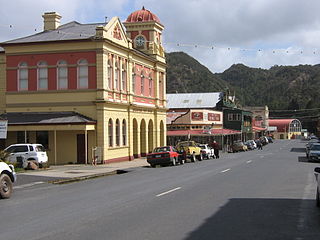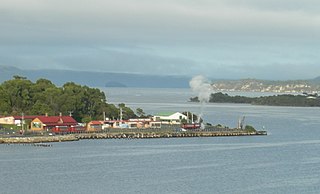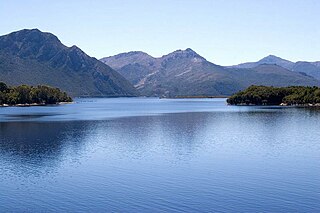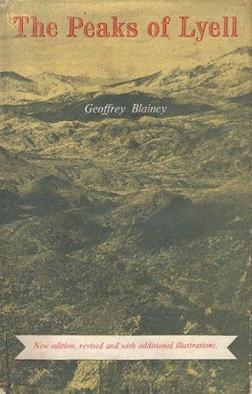| Name | Status | Age | Address/Place of Origin | Notes |
|---|
| John Bawden | Single | 25 | England | Resided at Linda Valley, Tasmania. Had relatives living in Truro, Cornwall, England |
| Valentine Bianchini | Single | 48 | Austria | Identified by his earring |
| John (Jack) Bolton | Single | 38 | Gormanston, Tasmania | Resident of Gormanston, Tasmania |
| John Bourke | Single | 24 | Victoria | Mother lived at Daylesford, Victoria. His body was the last recovered. |
| William Henry Bowker | Married | 42 | Ballarat, Victoria | died 1 September 1919, aged 49 leaving a wife and 7 children |
| Samson Rodda Bray | Married | 33 | Bendigo, Victoria | Wife and one child living at Bendigo, Victoria |
| Louis Burke | Married | 43 | Sweden | Wife residing in Hobart, Tasmania |
| John Creeden | Married | 46 | Westbury, Tasmania | Identified by his gold crowned front tooth |
| James Davey | Married | 37 | Victoria | Wife and four children living at Linda Valley, Tasmania |
| Albert Mansfield Gadd | Married | 32 | Queenstown, Tasmania | Died 20 February 1913. Native of Hobart, Tasmania. He had 7 children, his wife pregnant with their eighth when he died. Albert was posthumously awarded the Clarke Gold Medal for bravery from the Royal Humane Society. His brother Gilbert was rescued from the1000ft level. |
| George Gard | Single | 21 | Queenstown, Tasmania | His married sister lived in Queenstown, Tasmania, and his mother lived in Victoria. |
| Thomas Gays | Single | 22 | Victoria | Gave up his place in the last rescue cage to a married man. Mr. Gays rose to the height of absolute heroism. The cage was ready to come up, when he saw a married man on the plat. He calmly stepped out of the cage into the blinding smoke and sent it up the shaft. That was the last cage that left. [15]
|
| Charles Green | Single | 22 | Launceston, Tasmania | Native of Launceston, Tasmania |
| Francis Henry Guy | Married | 27 | Victoria | Wife and three children residing in Queenstown, Tasmania |
| James Thomas Hall | Married | 32 | Mount Lyell, Tasmania | Brother rescued from the 1,000 ft level. Native of Campbell Town, Tasmania. Wife and two children living at North Lyell township. |
| Eden Aloysius Hills | Single | 21 | Hobart, Tasmania | Native of Hamilton, Tasmania. His sister lived in the area, whilst other relative residing in Hobart, Tasmania. |
| William Horne | Married | 45 | Black Lead or Buninyong, Victoria | Married with six children |
| John Jenkins | Married | 28 | Hobart, Tasmania | Wife of twelve months residing in Hobart, Tasmania |
| Henry Jones | Single | 22 | Hobart, Tasmania | Sister living in Queenstown, Tasmania. Neither parent living. |
| John Martin Leeman | Single | 27 | Victoria | Body identified by his brother Charles |
| Zephaniah Lewis | Married | 41 | Victoria | Wife and eight children living at Gormanston, Tasmania. Body identified by oldest son William. |
| Thomas Maher | Married | 31 | Victoria | Wife in Linda Valley, Tasmania |
| Joseph McCarthy | Married | 40 | New South Wales | Wife and child residing at Linda Valley, Tasmania. To them a letter pinned to the wall by a "spider", was addressed. |
| Eugene Felix McCasland | Single | 27 | New South Wales | Engaged to a girl from Linda Valley, Tasmania |
| Edmund Michael McCullagh | Single | 49 | Richmond, Tasmania | Lived with his sister and brother, Thomas, at Queenstown, Tasmania. |
| James Bede McGowan | Single | 23 | Queenstown, Tasmania | Identified by his brother Martin |
| Bernard. McLoughlin | Married | 35 | Ballarat, Victoria | Never saw his youngest child as it was born after he left for North Lyell |
| Arthur McMaster | Married | 27 | Victoria | Identified by brother-in-law, Thomas McHenry |
| Herbert John Mitchell | Single | 23 | Linda Valley, Tasmania | Mother living in Black Lead, Victoria |
| Peter Moore | Single | 48 | Ireland | Left a note for the landlady at the Boarding House, letting her know where to send warning if anything should befall him. |
| Cornelius O’Keefe | Single | 26 | Tasmania | Identified by his father, John |
| James Robert Park | Married | 37 | Victoria | No children, but wife, Annie Eleanor living in Linda Valley, Tasmania. |
| Christopher Quake | Single | 50 | Victoria | Formerly known as W.J. Smith, but better known by the nickname of "Speewa". |
| Patrick Reiley | Widower | 46 | Tasmania | Identified by his brother John. Native of Westbury, Tasmania. Resided in Linda Valley, Tasmania. Had three children, two daughters and a son, residing in Hobart. |
| Francis John Rolfe | Married | 31 | Victoria | Shift boss. Two children residing at Linda Valley, Tasmania. |
| James Roland Rolfe | Single | 22 | Victoria | Parents living at Malmsbury, Victoria. Rumours stated that he was the brother of Francis John Rolfe |
| Thomas Saunderson | Married | 37 | North Lyell, Tasmania | Had a wife named Wilhemina and a daughter named May. |
| Leonard Sydney Scott | Married | 22 | Victoria | Identified by his father-in-law, Charles Morley. He had a wife named Louisa and a six-week-old daughter named Violet. Native of Melbourne, Victoria. |
| James William Smith | Single | 19 | Tasmania | His mother was residing with Mrs O'Connor, Princess St, Port Melbourne. |
| John Studwell | Single | 20 | Tasmania | Father residing at Manly, N.S.W.. Formerly from Beaconsfield. Identified by the initials "J.S." tattooed on his left forearm. |
| James Tregonning | Single | 18 | Kyvalley, Victoria | Recently arrived from England with father Daniel Tregonning, and younger sister, Eva Frances Tregonning. |
| William Tregonning | Single | 20 | Kyvalley, Victoria | Recently arrived from England with father Daniel Tregonning, and younger sister, Eva Frances Tregonning. |
| Richard John Treverton | Married | 34 | Queenstown, Tasmania | Wife and two children residing at Queenstown, Tasmania. Better known as "Snowy". |
| Henry Wright | Married | 54 | North Lyell, Tasmania | Resided at Linda Valley, Tasmania. Two daughters; one aged 17, the other aged 23 |










